[Updated on 1 January 2024] No matter what your skill level may be, playing squash is more fun if you find ways to improve your game. If you are like many others, your time for practice is limited due to work and other family obligations. However, if you take a look at the tips on singles squash strategy in this guide, you will be able to get the most out of your time on the court and improve your game.
Contents
Start with the Equipment
Make sure that you have the right equipment before you play. You should have squash shoes, a squash racket, squash balls, and squash goggles. You can have a pro in the pro shop help to ensure that you have the right balls and racket for your skill level.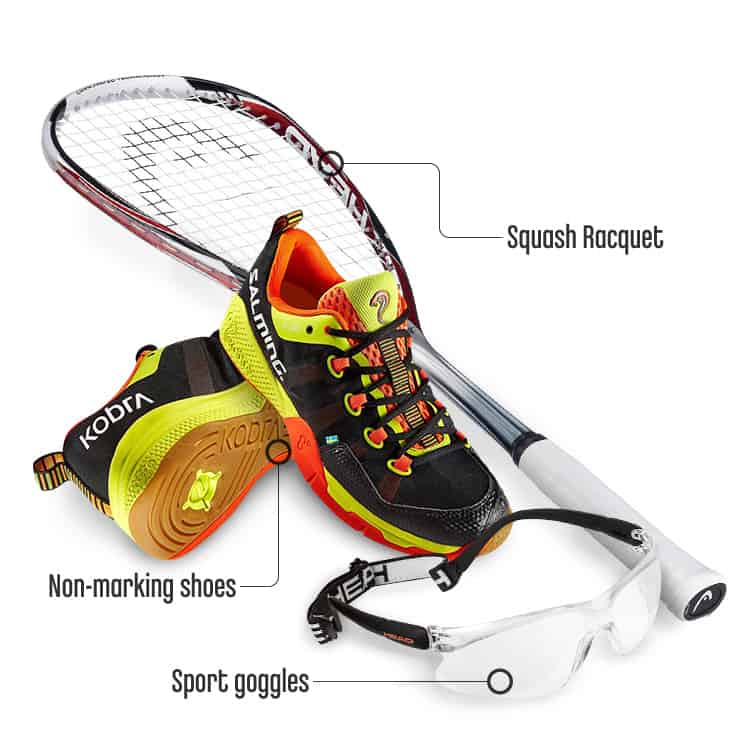
How to Play Singles Squash
Before you develop your squash strategy, you will need to know the basics of the game. Begin with the layout of the court. Learn where the lines are and what they mean. You need to know what is considered out and where you should stand when you serve.
The basics of the game are pretty straightforward. Take a look at the basics of squash: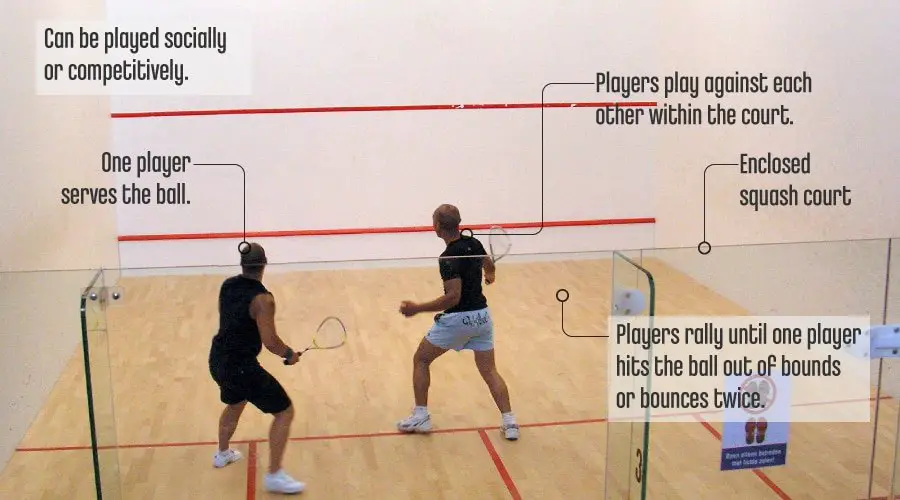
- Squash is played on an enclosed squash court.
- Squash can be played between two people or two teams with two people on each team.
- First, one player serves the squash ball.
- The players rally until one player hits the ball out or hits the ball after it bounces twice.
- Squash can be played socially or competitively.
As you are playing, the more you make your opponent run after the ball, the better you will do. When you start out, you should take some lessons until you become familiar with how the game works. As you improve, you will be able to practice on your own.
Tip #1: Make Sure You Have a Neutral Grip
To become really good at squash, you have to be able to think and move fast. This includes switching between a forehand and a backhand, and if your grip is incorrect, you will have trouble switching effectively. You should have a neutral grip with a V shape between your thumb and forefinger. You will use your forefinger to gain greater control of the racket by extending it up the shaft.
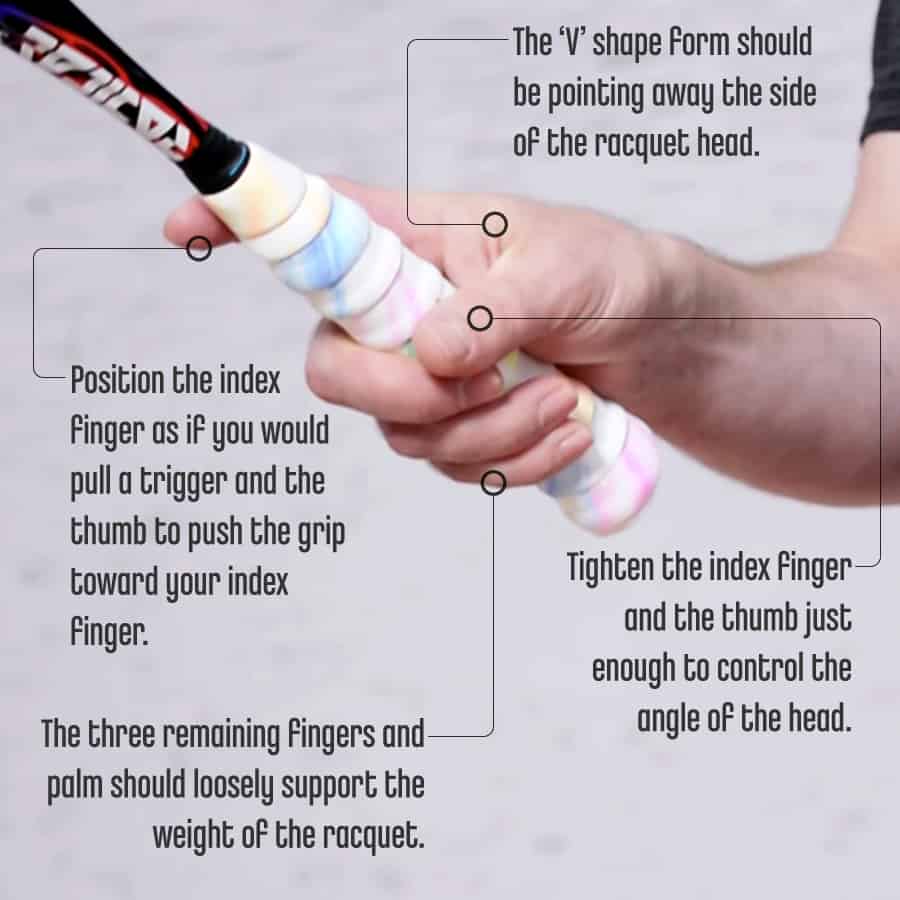 The lower part of the grip should rest against the fleshy part of your palm, and the remaining three fingers will wrap around the grip, although most of your control will be with your forefinger and thumb. Make sure that you can easily switch between your forehand and your backhand so that you are ready for any shot that your opponent might make.
The lower part of the grip should rest against the fleshy part of your palm, and the remaining three fingers will wrap around the grip, although most of your control will be with your forefinger and thumb. Make sure that you can easily switch between your forehand and your backhand so that you are ready for any shot that your opponent might make.
Tip #2: Perfect Your Serve
The best way to achieve this is to practice. You want to practice serving with a high lob that hits the side of the wall before it gets to your opponent. By practicing, you will learn where you need to hit the serve to achieve this. Take your time when serving so that you have more control over the ball.
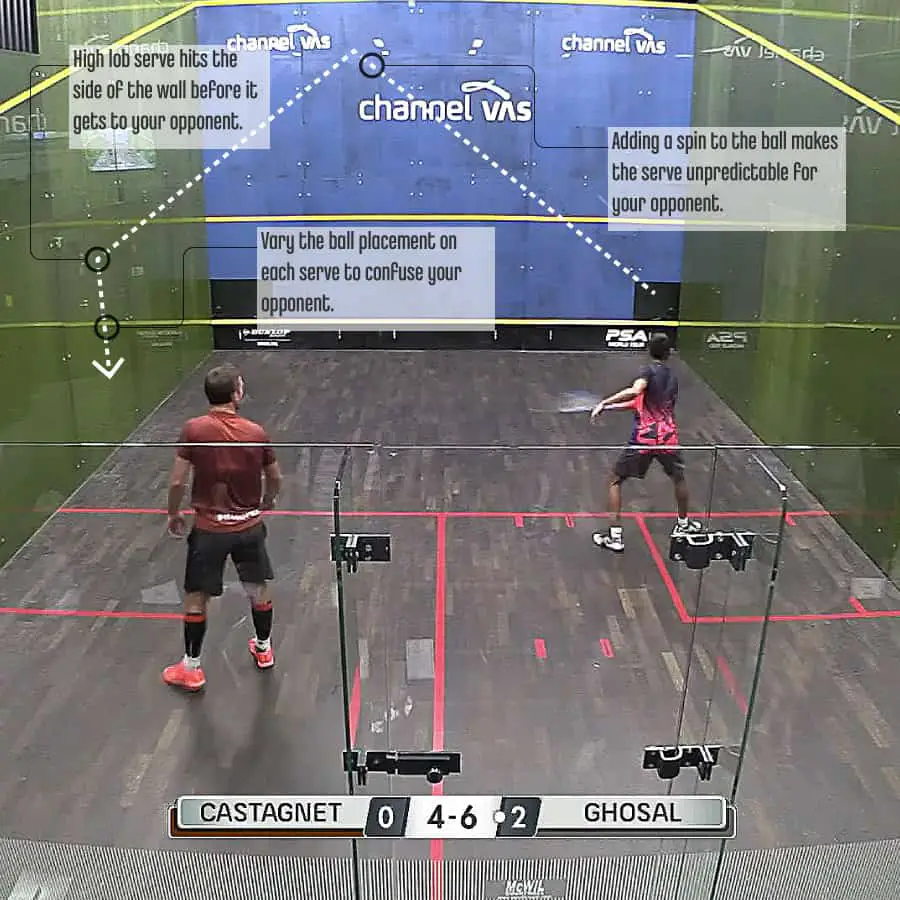 There are a few ways that you can tweak your serve to make it more difficult for your opponent. If you add some underspin, the ball will die after it hits the wall. In addition, you should be unpredictable by changing your placement of the ball.
There are a few ways that you can tweak your serve to make it more difficult for your opponent. If you add some underspin, the ball will die after it hits the wall. In addition, you should be unpredictable by changing your placement of the ball.
Serve it to land by your opponent’s feet in one shot, and then make it go high the next. This will keep your opponent off guard. After you serve, you want to go to the middle of the court because this puts you in the best position to continue the rally.
Tip #3: Learn How to Return Serve Well
Face the front wall with an open stance, but watch your opponent to try to determine where he or she will hit the ball. If you stand about one racket length inside of the service box, you will be in a good position to see your opponent and cover the court to return the serve.
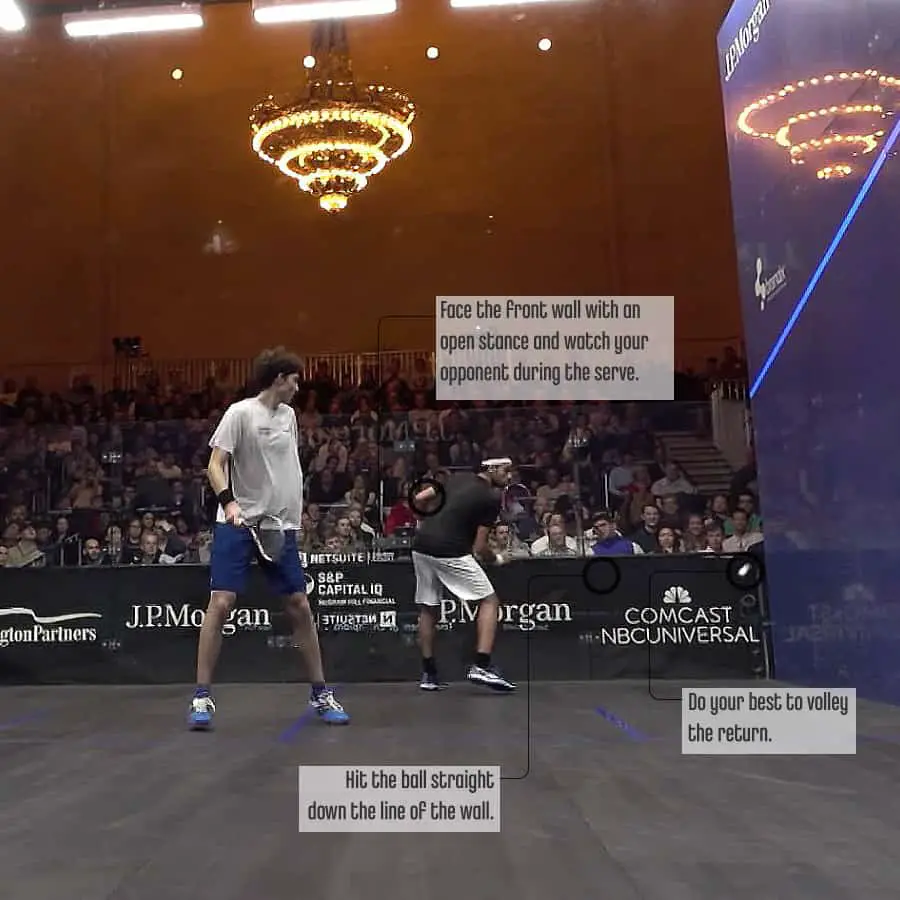 Do your best to volley the return. You can move forward and volley before the ball hits the wall, or you can wait until right after, but don’t let it go to the wall unless you know it will come far enough for you to hit it well.
Do your best to volley the return. You can move forward and volley before the ball hits the wall, or you can wait until right after, but don’t let it go to the wall unless you know it will come far enough for you to hit it well.
When you return the serve, try to hit the ball straight down the line of the wall, and aim for a spot high on the front wall. Your opponent will have to work harder to continue the rally, and he or she will be less likely to beat you on the next shot.
If your opponent hits a hard serve, you should shorten your backswing because you do not need to add any power to the ball. In addition, if you notice that your opponent has hit a hard overhead serve, you can move back a few steps to be ready to return.
Tip #4: Have Good Driving Length
Once you are past the serve, you need to rally. You should always try to hit the ball straight back into the corners because this will prevent your opponent from being able to volley the ball. If your partner has to hit the ball off of the back of sidewalls, it may interfere with his or her swing, and you will have time to get to the middle of the court, which is the dominant position.
Tip #5: Always Recover to the T
After every shot, your goal is to get back to the middle of the court, also known as the T. You can actually reach 60% of your potential next shots from this position, and you will be in control of the rally. Whenever you get a chance to volley, take it. When you volley, you have more time to get back to the T. Stay in front of your opponent because you will have more chances to volley and control the game.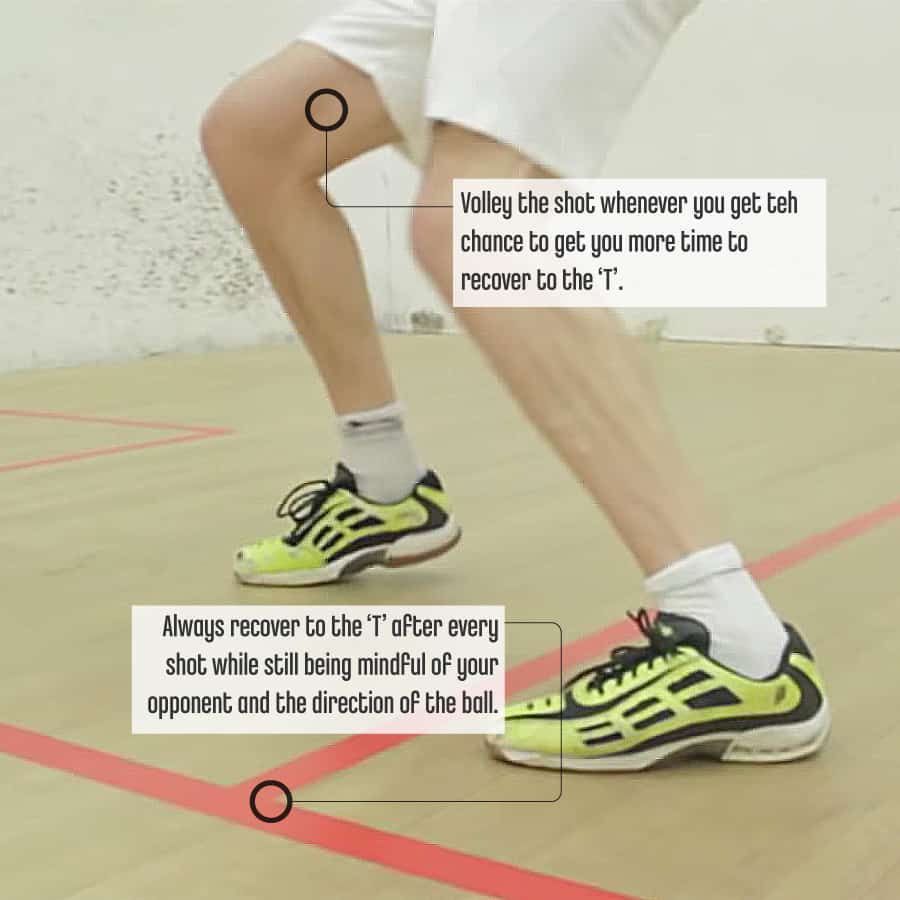
Tip #6: Look for Open Space
You want to make the ball go into open space whenever you can. If your partner is off balance or not in the position, you can really make him or her run and have a greater chance of killing the ball. Always be aware of where your partner is, and take any opportunity you have to hit the ball into open space.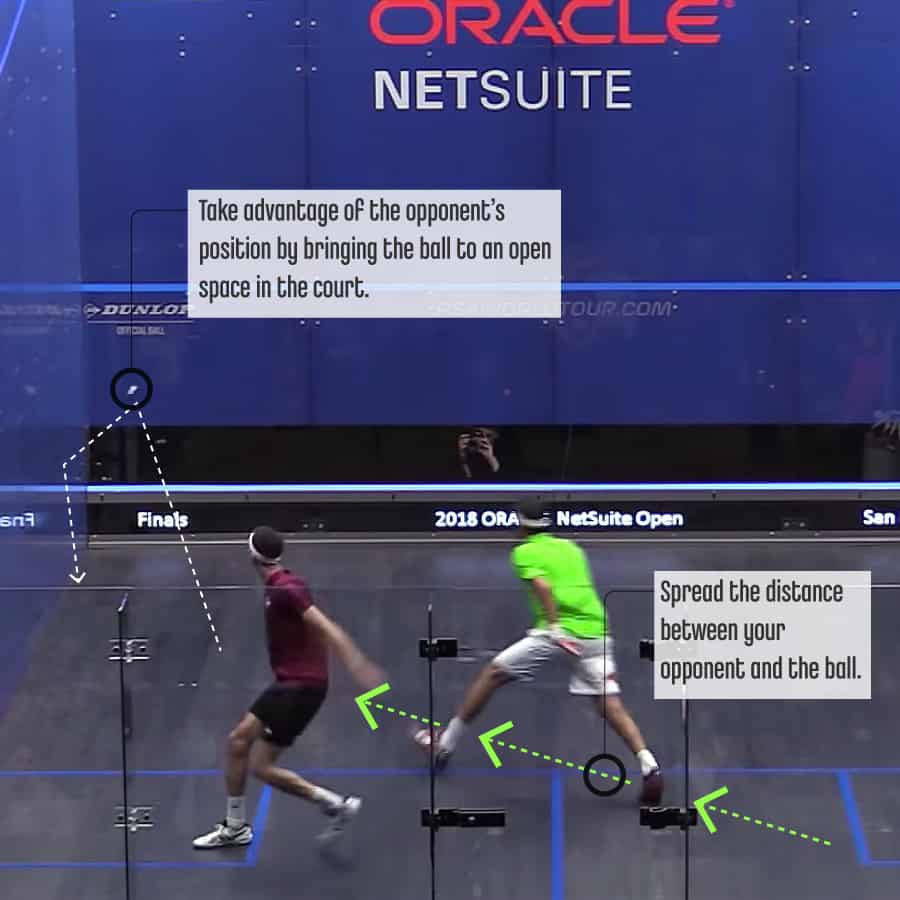
Tip #7: Try to Hit the Ball as Soon as Possible
After your opponent hits the ball, you want to try to hit it as soon as possible to speed up the game and catch your opponent off balance. This way you can recover to the T and take advantage in the game. In addition, you can mix up how you hit the ball. Try to use different speeds and spins to really keep your partner guessing.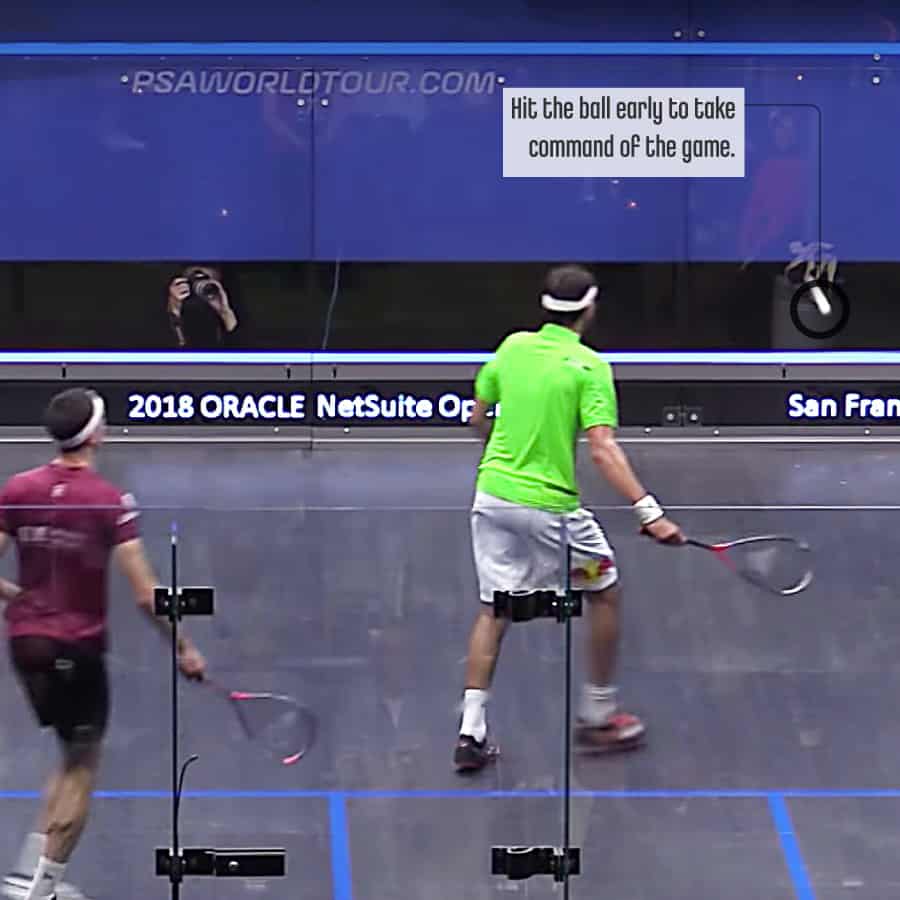
Tip #8: Always Watch the Ball
You must always keep your eyes on the ball. The fastest way to miss a shot is by taking your eyes off the ball. Keep your eyes on the ball throughout the game, and you will have the advantage of knowing where it is and having more time to plan the speed and placement of your shot.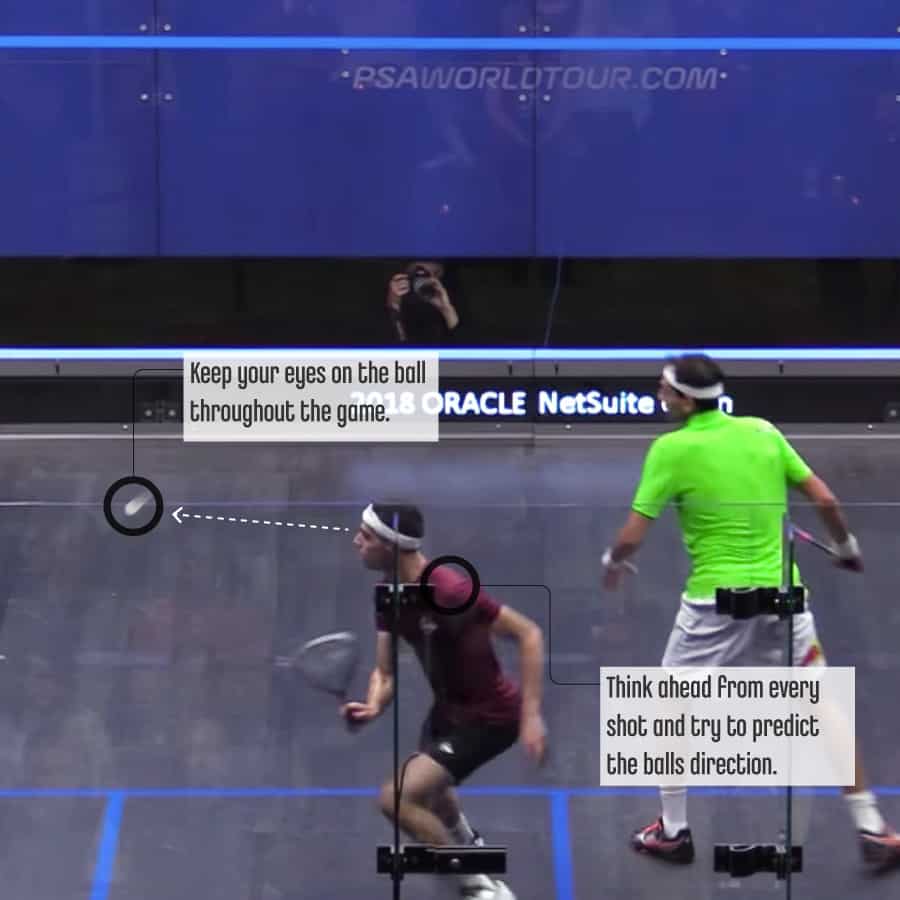
Tip #9: Exercise to Become More Fit
There is no doubt that playing squash is a great exercise, but if you aren’t fit, it can almost be too much. Squash requires fast movements in different directions, and the best way to achieve these things is by becoming more fit. It will also help to prevent injuries. You should map out a fitness routine that will improve the skills you need for squash.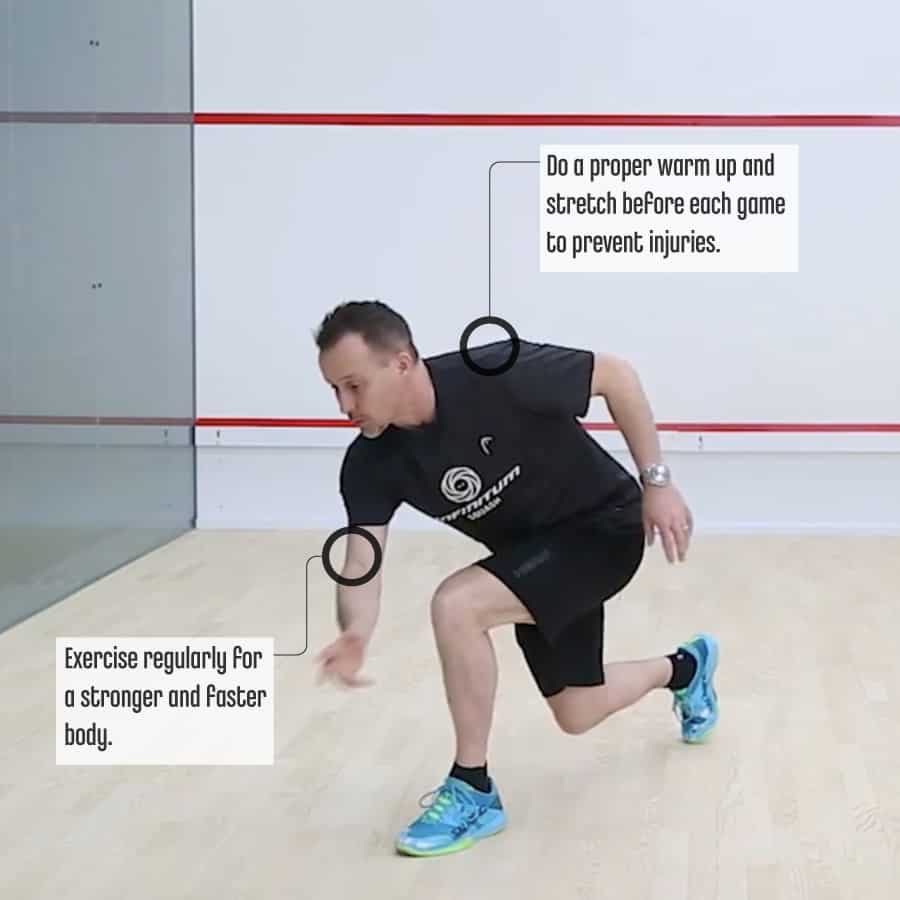
Tip #10: Practice Alone
One of the great things about squash is that you can actually practice alone. The more you are able to do this, the faster you will improve. You can work on mastering your return of serve or making a difficult shot. Any time you can put into practice will go a long way toward making you a better squash player.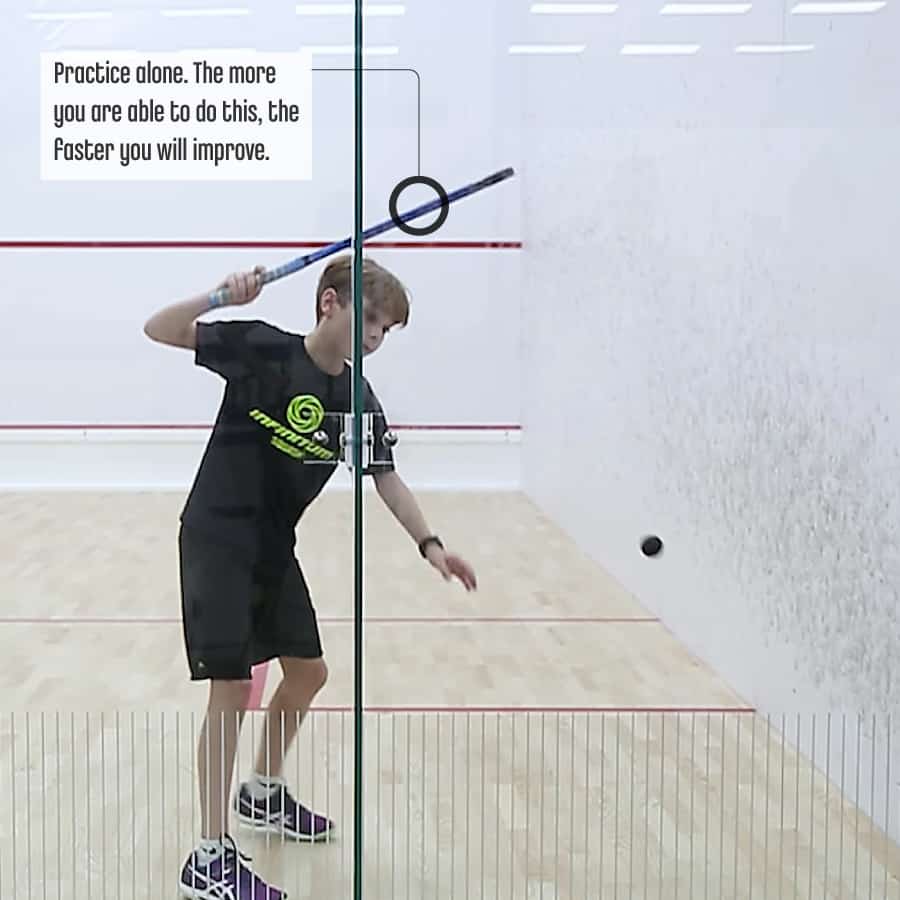
Tip #11: Play with Different Opponents
You should play with different opponents, as many as you can. If you play the same opponent over and over again, you may master playing that individual, but you may then have trouble if you face someone else. Try to mix it up, and play with opponents who are of any skill level. If they are better than you, you will learn from them, and if you are the stronger player, it will give you a chance to work on the finer technical aspects of the game.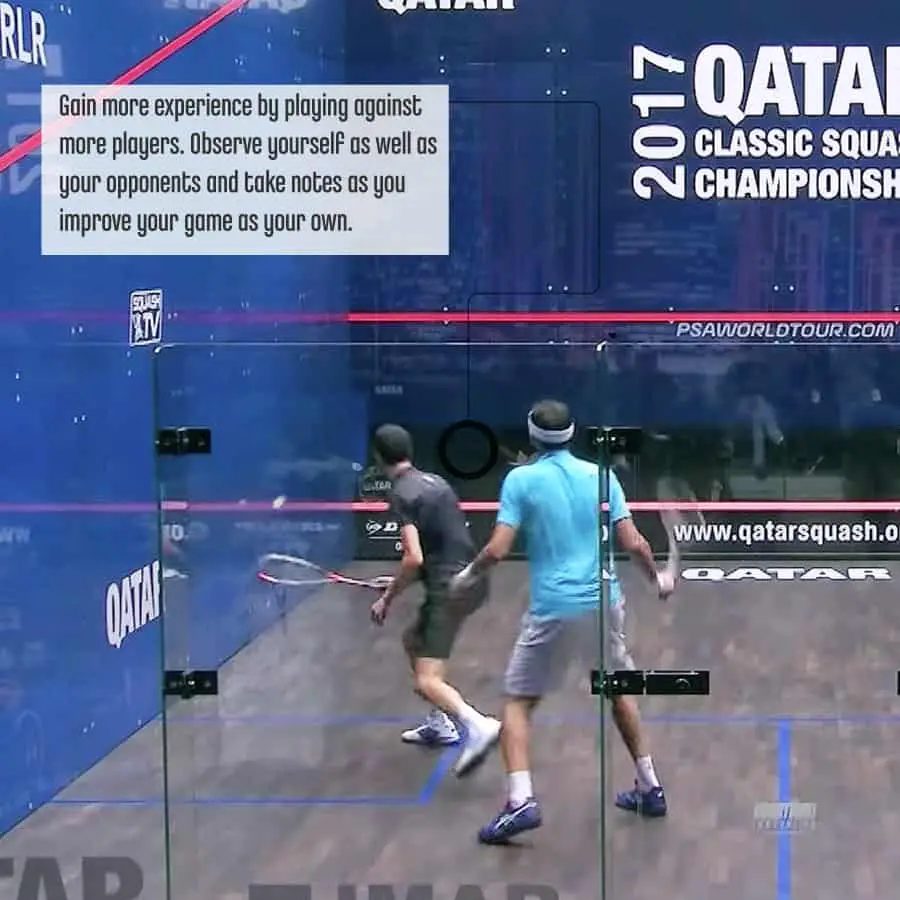
Tip #12: Try to Hit the Ball Close to the Side Wall
It is a good idea to hit the ball close to the sidewall. When you do this, your opponent’s only choice is to hit it straight, so you will know where the ball is coming. This will give you a better chance of returning to the middle to stay in control of the game.
Tip #13: Never Skip Your Warm-up
You absolutely must warm up before you play squash. Squash is very fast-paced, and it requires that you move quickly in different directions. In addition, it is a major physical exertion. For these reasons, you must make sure that your body is ready to play so that you don’t sustain an injury.
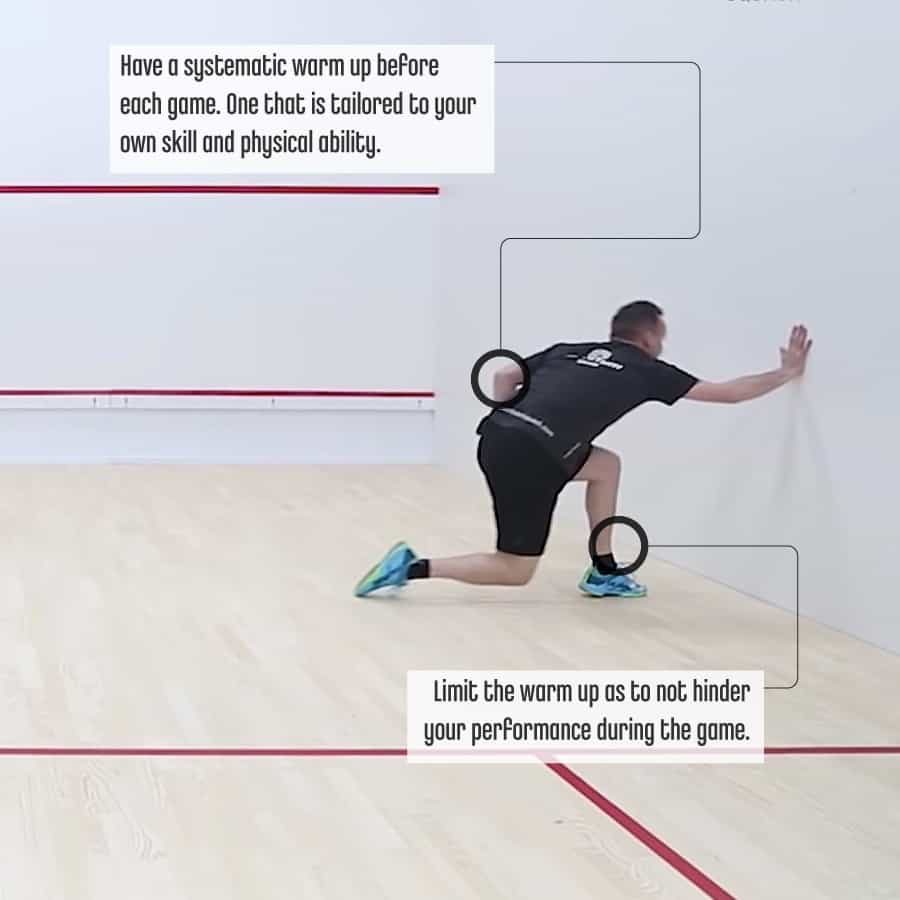 You should have a warm-up plan that you do every time you play squash. If you are injured, you need to take a break to let your body heal. The problem is that by playing with even a slight injury, you are likely to make it worse, which might take you out of the game for a longer time. Warming up properly every time you play will help you to avoid this situation altogether.
You should have a warm-up plan that you do every time you play squash. If you are injured, you need to take a break to let your body heal. The problem is that by playing with even a slight injury, you are likely to make it worse, which might take you out of the game for a longer time. Warming up properly every time you play will help you to avoid this situation altogether.
Tip #14: Harness Your Mental Power
Squash is a physically demanding game, and it improves timing and hand-eye coordination. However, it is just as much of a mental workout as it is a physical one. Not only does your brain need to stay alert to determine where the next shot will land, but you need to watch and read your partner’s body language and the ball as well.
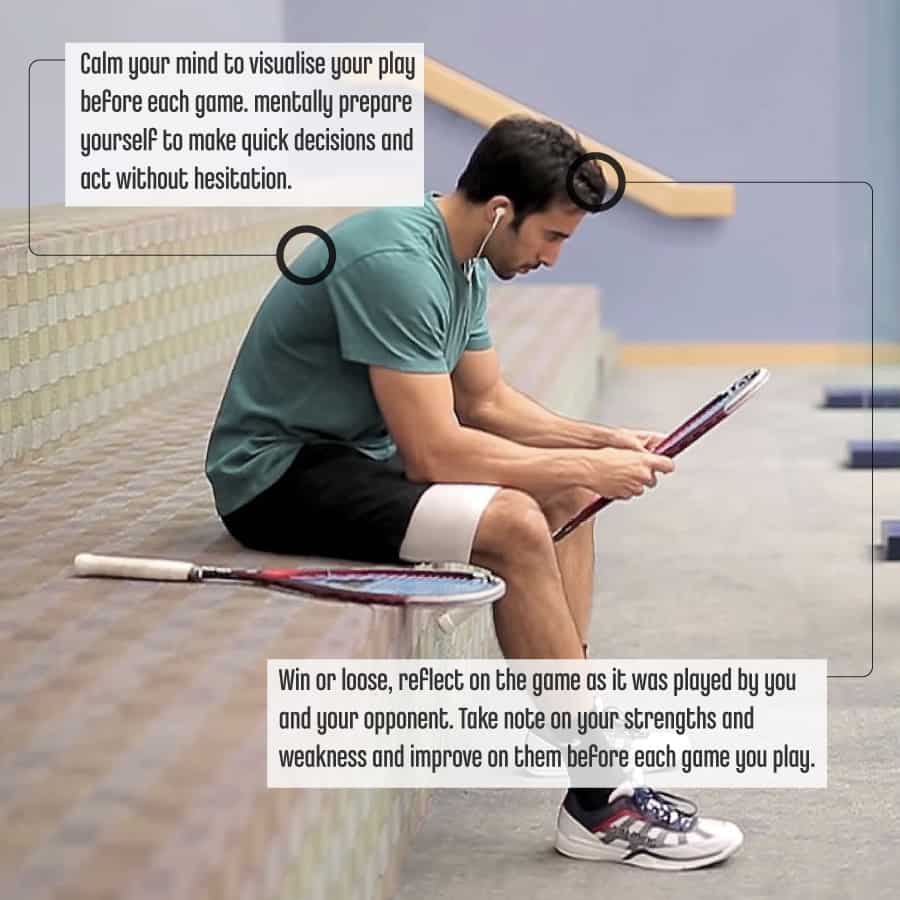 After you play, spend time thinking about the game. Consider how you could have played better and what you could have done differently. It is worthwhile to keep a journal and record your thoughts. When you are able to break down your mistakes and teach yourself how to fix them, you will improve your overall game as well.
After you play, spend time thinking about the game. Consider how you could have played better and what you could have done differently. It is worthwhile to keep a journal and record your thoughts. When you are able to break down your mistakes and teach yourself how to fix them, you will improve your overall game as well.
An added benefit to taking the time to think it through is that you can teach yourself how to trick your opponent through your body language. If your opponent expects the ball to go one way and it goes the other, he or she will be off and have to struggle to return it. You can speed up the pace of the game by being on top of the ball and returning to the T zone over and over again. Set up early for your shot, and stay in front of your partner, but think about how you hit the ball so that you can trick your opponent into thinking one-shot is coming when it is not.
Play Squash Like a Pro
Playing squash is a great exercise and a lot of fun. In addition, it is mentally challenging. Squash works out your body and your mind. Between squash games, think about the game and your opponent. You can spend some time coming up with strategies that play on your opponent’s weaknesses. This will improve your game the next time.
To play squash like a pro, you will want to incorporate all of these tips into your game. Work on your form, your fitness, and your mental state, and always strive to learn and improve. The more you practice, the better you will become. Squash is challenging, invigorating, and mentally stimulating, so you will always have goals to meet.
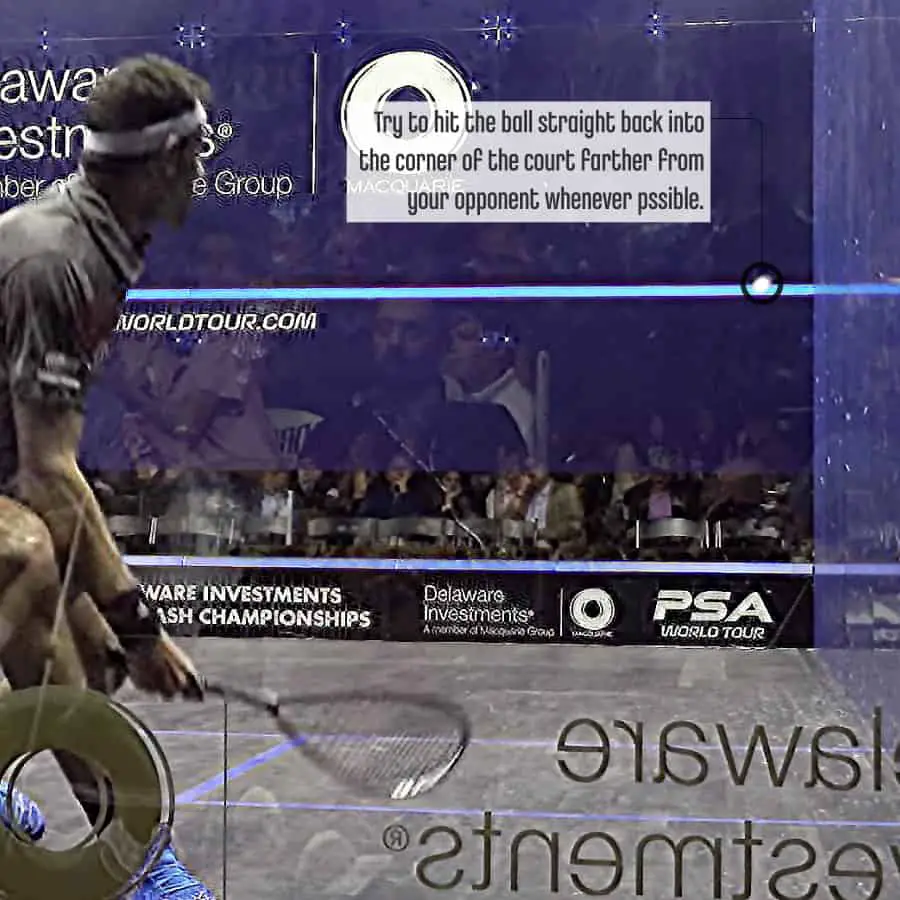

Leave a Reply